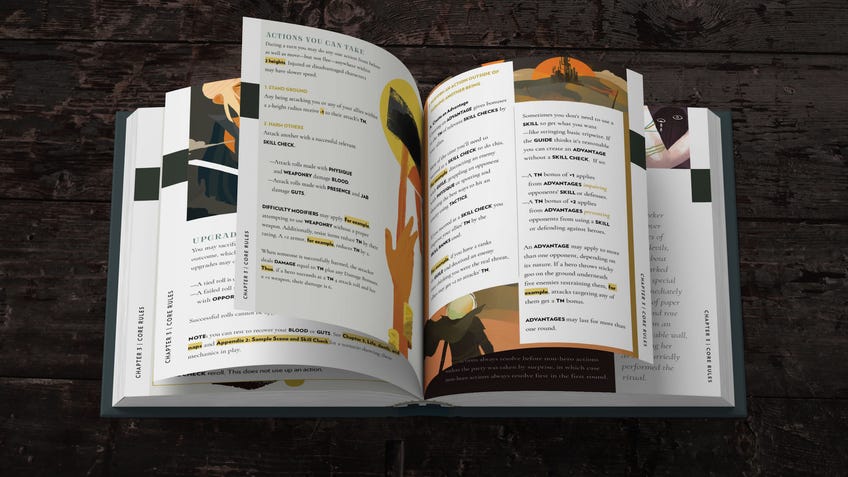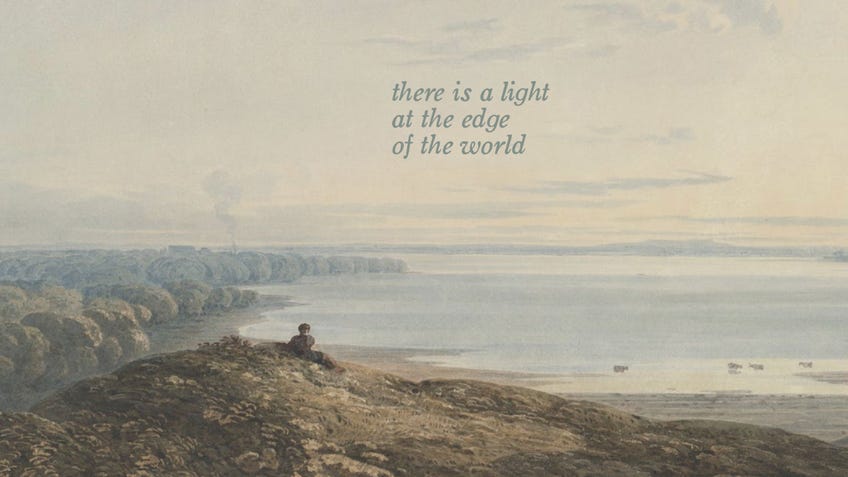Arc designer’s newest TRPG needs two players, several days and a lot of emotional honesty to complete
Build a little lighthouse in your soul.
The mortifying ordeal of being known versus the rewards of being loved. The Tim Kreider quote-turned-meme has become a tired, anxious anthem for a generation who view themself as part of a larger global community and yet are stuck in a cultural landscape that does not prioritise healthy intimate connections.
Enter the newest tabletop RPG from designer momatoes, There is a Light at the Edge of the World. Built for only two players, the game is a play-by-post attempt to repair a fundamentally broken lighthouse situated within an untraceable void. That void restricts language and forces the players to interact via written or typed text, recorded sound or some other intermediary technology.
Even then, they must rely on their partner’s ability to discern their message’s intent to extract the true meaning of their instructions and carry out the necessary repairs. The game ends in success when the pair manage three successful communications. The game ends after five days, regardless. There is an urgency coursing under every communique - do you reveal secrets about yourself to foster a better understanding with your partner at the risk of compromising the relationship? Do you even understand yourself well enough to attempt such an existential feat?
There is a Light at the Edge of the World mechanises these interactions via two stats: Empathy and Insight, the ability to connect with another and the capacity to truthfully share oneself. Both players will start with zero tokens, gaining them through play and spending them to thin the wall between the Mechanic and Keeper, two roles each player dons during the game. Each day will reveal random events that are answered with personal prompts exploring their character’s emotional and physical response. The designer says the pair can wait multiple days to consider their prompt and fit the game into their lives however they best see fit.
Both players will then have to share their responses according to the precise communication limits set at the outset of the game. Perhaps they use images to convey feelings, or news headlines to infer convictions. Both characters will know a scant six common words - ‘lighthouse’, ‘not’ or ‘outside’, for example - to grease the wheels of translation. A roll modified by the result determines how the lighthouse changes, and the players end the day by asking each other personal questions in an attempt to gain Lore about their partner.
There is a Light at the Edge of the World is still in development - momatoes is currently Itchfunding the game and plans to flesh out more prompts, scenarios and Lore - but a basic digital version can be purchased for $10 and will give the buyer access to all future updates and additions. The Filipino independent artist garnered a fair bit of acclaim for her ARC: Doom RPG last year, which Dicebreaker included on its list of the best tabletop games you might have missed in 2021.

Those intrigued by this setup can download a free demo of the TRPG on its Itch.io page. Two-player games are an interesting construction and allow for designers to play with the conventional social politics of play. Mix in a play-by-post framework, which is different from epistolary games but could certainly be played via the mail, and There is a Light at the Edge of the World promises to be a curious and powerful experience.
Momatoes was recently the recipient of the 2022 Diana Jones Emerging Designer Program, a corollary to the primary annual award named after a pyramid containing the burnt remains of a notorious 1980s board game. The program is meant to highlight “rising and impactful talent in the analog tabletop game industry”, according to the organisation’s website, and is in its second year. The inaugural winner in 2021 was A Field Guide to Memory creator Jeeyon Shim.


